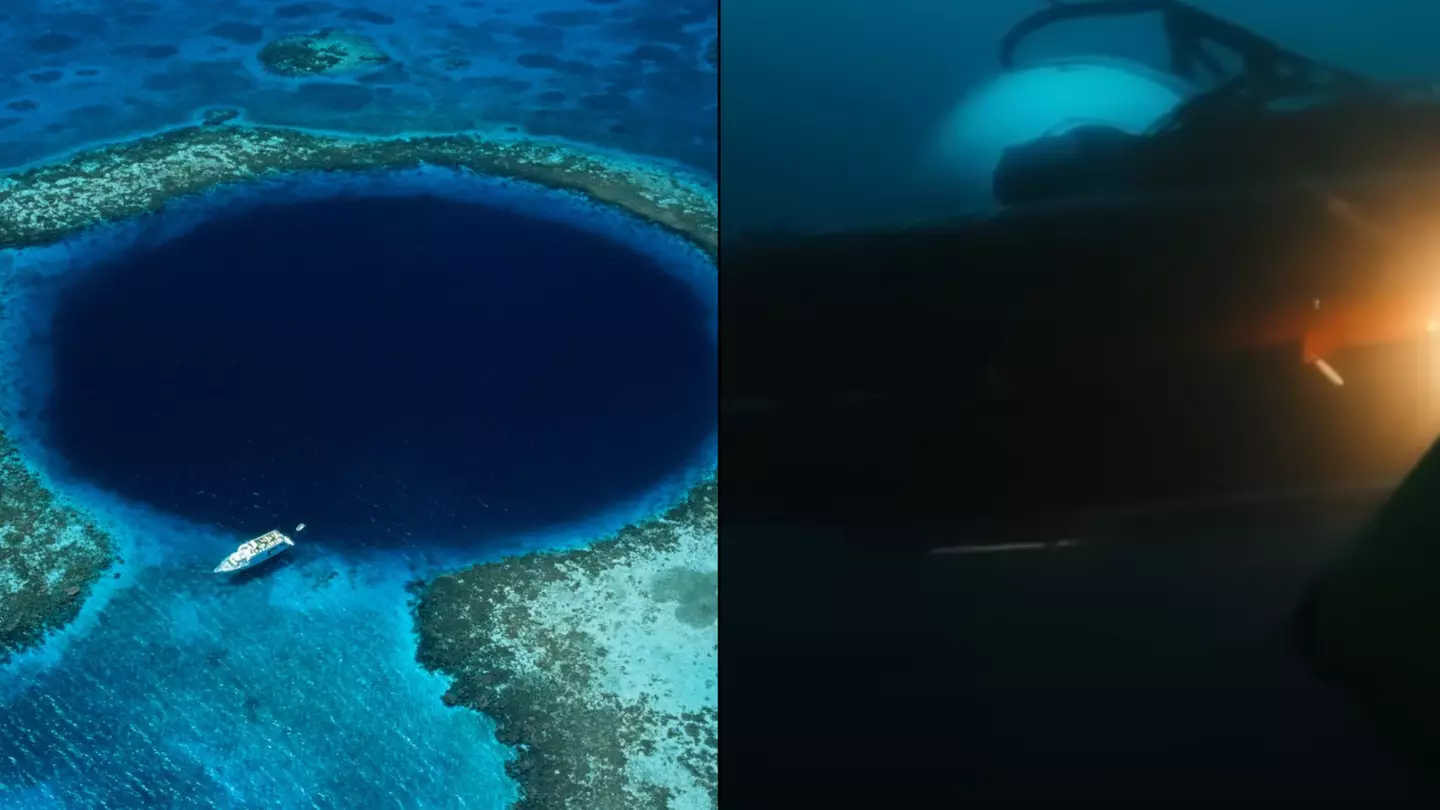
Around 60 miles off the coast of Belize lies a geographical wonder that is simultaneously amazing and terrifying, the Great Blue Hole.
It's gargantuan marine sinkhole which began life as a cave, but as ocean levels rose became flooded thousands of years ago.
The explorer Jacques Cousteau made the Great Blue Hole famous and the site has ended up being a popular spot for divers.

Perhaps there's something in the human instinct to explore a giant hole when we find one, but the Great Blue Hole can punish the inquisitive.
Advert
Diving down to the bottom of the Great Blue Hole has uncovered human remains from two people who died in the hole, along with a GoPro and plastic waste people have dropped there.

It was decided to leave the bodies where they lay, with the bottom of the Great Blue Hole considered a worthy resting place for the deceased divers.
There have been a number of well-equipped efforts to explore the Great Blue Hole, including an expedition launched in December 2018 where a pair of submarines ventured down into the waters of the phenomenon.

At first they found the waters teeming with aquatic life, but then beyond a certain point the bustling undersea environment disappeared.
Advert
Around 90 metres deep in the Great Blue Hole there is a layer of hydrogen sulphide beyond which the water becomes much darker and devoid of life.
Past this point there are only the dead husks of marine life that died and sank down into the dark depths far from any sunlight, along with the human remains.

The December 2018 expedition was the one which discovered the human remains of two divers, alerting the authorities as to their discovery before leaving the bodies where they lay.
Advert
Using footage from an underwater drone they were able to record their discoveries, including the moment they found the bodies of the two divers.
The footage - that will 'terrify the world' - also captured the stark contrast between the Great Blue Hole above and below the layer of hydrogen sulphide.
The water above it was teeming with life and that below it a disturbing graveyard that was barren of light and activity, being little more than a home for the deceased husks of once-living things that had unfortunately fallen through the depths.
Advert
The difference between these two worlds existing in the same place was stark, and at the bottom of the hole there was another amazing discovery, silt.
Yes, I know it doesn't sound very amazing but the layers of silt at the bottom of the Great Blue Hole helped point towards major events from history, including indications of major droughts and storms at around the time of the collapse of the Mayan civilisation.
Topics: Weird, World News